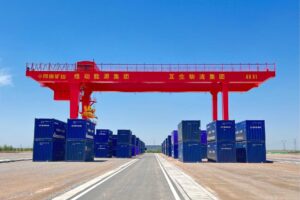When technology and eco-conscious intentions collide, big leaps are made towards a more sustainable future. With eco-friendly initiatives penetrating pretty much every industry, the apparel industry, which has long been criticised for its detrimental environmental impact, is also chiming in.
Advancements in technology are fuelling a more sustainable future. Not only are state-of-the-art garments being created, but are also making a positive change grassroots – in the supply chain.
Today, we explore how supply chain digitisation can increase transparency and traceability, helping to push the apparel industry to become more sustainable.
Transparency through digitisation
The prime shoppers of today are Gen Z and millennials, who are leading the sustainable consumption forwards. According to “The State of Consumer Spending: Gen Z Shoppers Demand Sustainable Retail” 2019 report, 62% of Gen Z and millennials alike prefer to buy from sustainable brands.
Alongside sustainability, authenticity and brand transparency are key priorities for Gen Z and are more important to them than to older generations. According to MIT Sloan School of Management, consumers would pay 2% to 10% more for goods from sources with transparent and sustainable supply chains.
In order to cater to these generations, it’s important to communicate that supply chain transparency and sustainability. That’s where technology comes to play. Many apparel companies are adopting product lifecycle management (PLM) software integration to leverage real-time data to deliver traceability for all stakeholders across a global network, and on a global network.
What was once an in-house electronic workbook is now a digital tool for everyone. Manufacturers, brands, and consumers can now verify where, how, and by whom a product was made. PLM software records and digitises the whole production process from the raw material through the supply chain and finally to the finished garment.
Ann Dowdeswell, Sales and Marketing Director of the leading work uniform supplier Jermyn Street Design, commented: “Digitisation of the supply chain makes the carbon footprint generated through the production and distribution of a garment transparent for all to see. That’s what the brands and consumers of today are concerned about. When the end user’s values align with those of the manufacturer and distributor, we can move towards a more sustainable and ethical apparel industry, where product quality and durability, fair working practices, and environmental protection are at the forefront.”
Supply chain storytelling with QR codes
So how can supply chain transparency be communicated to the consumers? The answer is QR codes.
QR codes printed on garments’ care labels provide shoppers with a thorough supply chain description that informs them about the garments’ origin and journey from field to store. Think of it as the garments’ digital passport.
Sara Swenson, Global Senior Manager Sustainability at the materials science and manufacturing company Avery Dennison, commented: “Technology is probably going to be the easiest way to create data to show that brands are making more sustainable actions, that they are not just greenwashing their sustainability progress.”
Moreover, many fashion brands are now expanding the scope of what a QR code entails. They’re including information about the sustainable aspect of the garment. This includes advice on conscious garment care to ensure its longevity, how to recycle it at the end of its life cycle, the benefits of high-quality garments, and how to brand authenticate it.
Swenson added that while “labels are by no means the solution that is going to solve everything in the apparel supply chain, it is the place that most people go to find more information on their environment.”
The apparel industry has been criticised for its unsustainable and unethical practices for a long time. Nevertheless, technology is helping to shape a brighter future that sees consumers as integral to the supply chain. We’re slowly moving towards a connected production experience with transparency, trust, and traceability at its core. That’s the future of sustainability.






